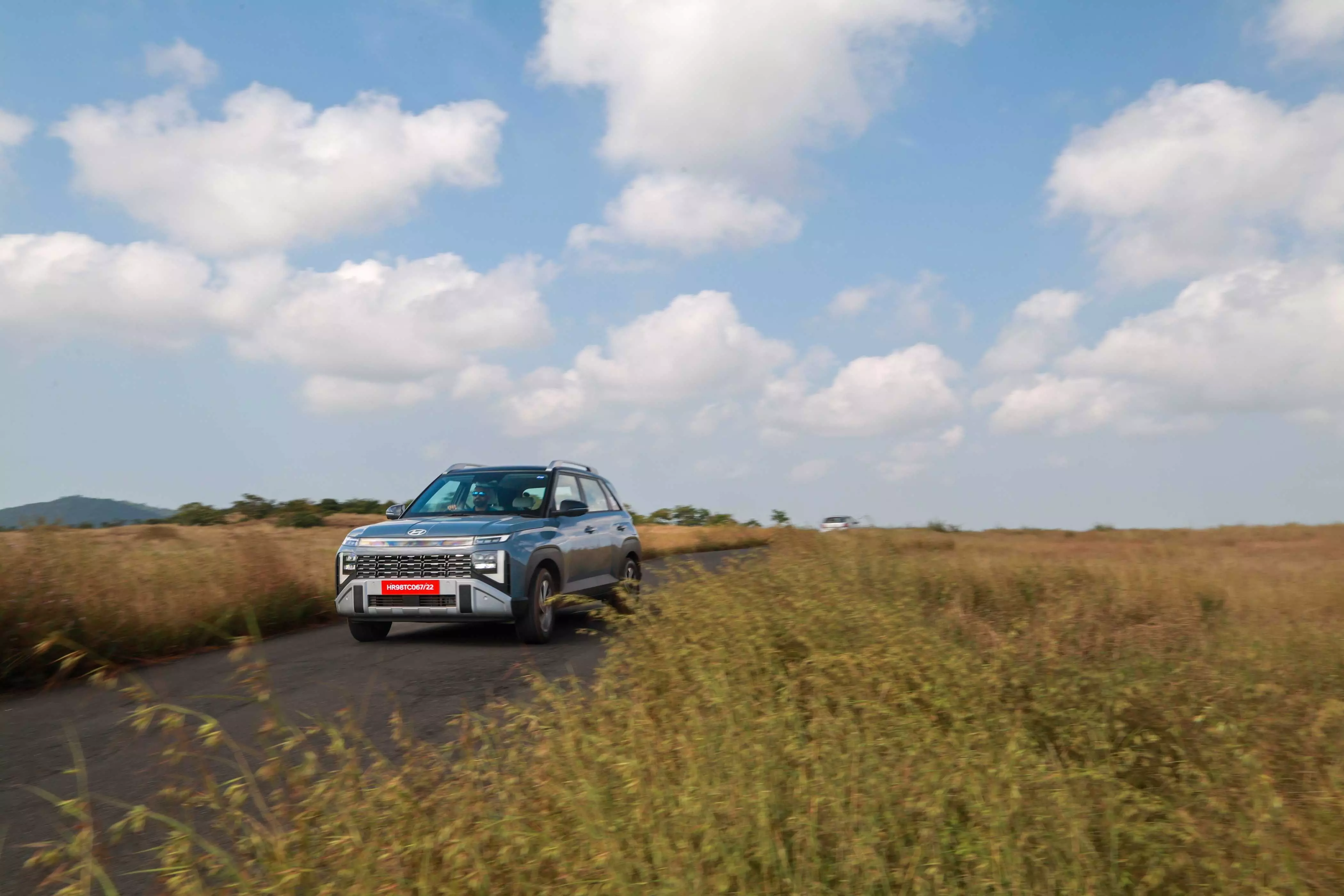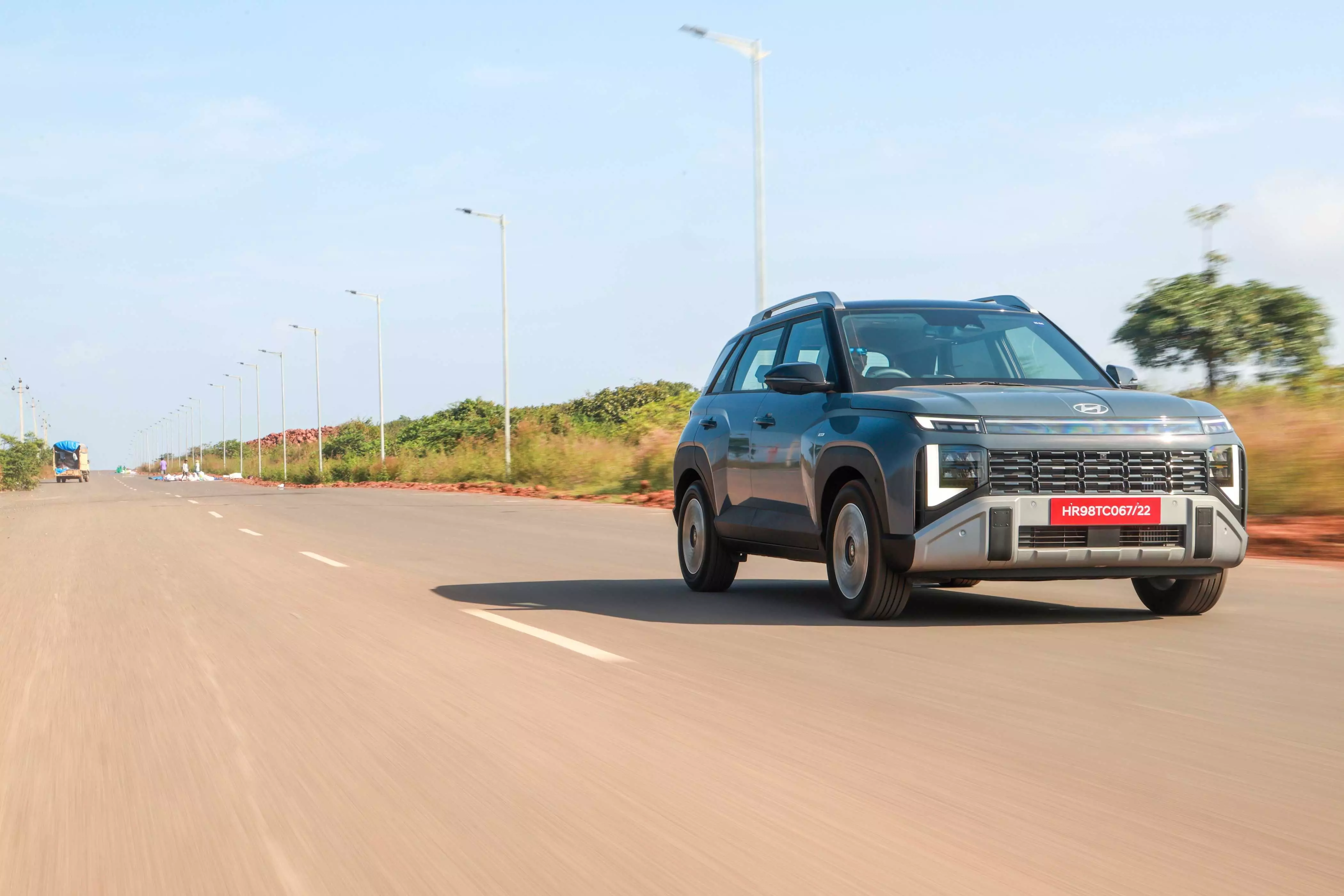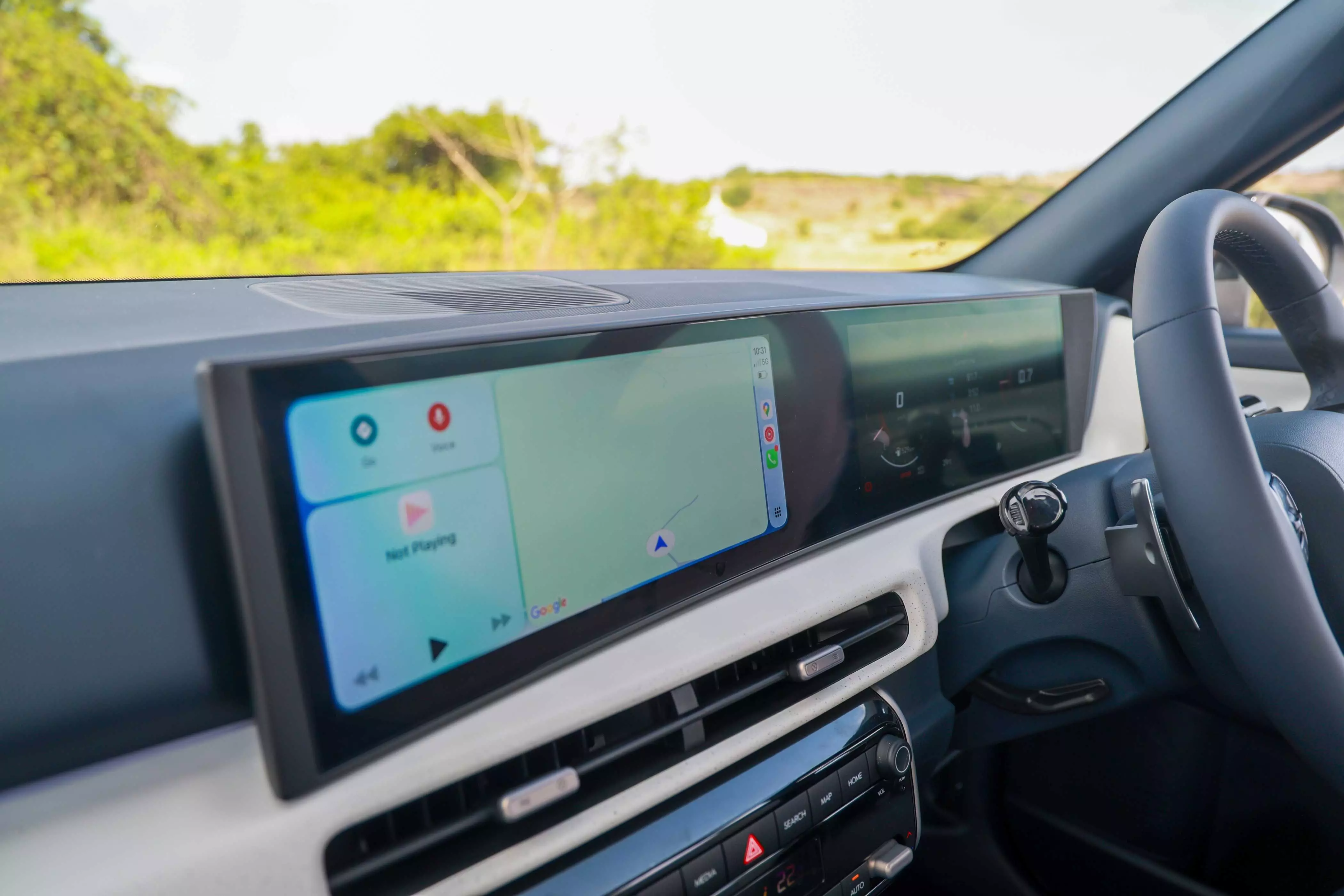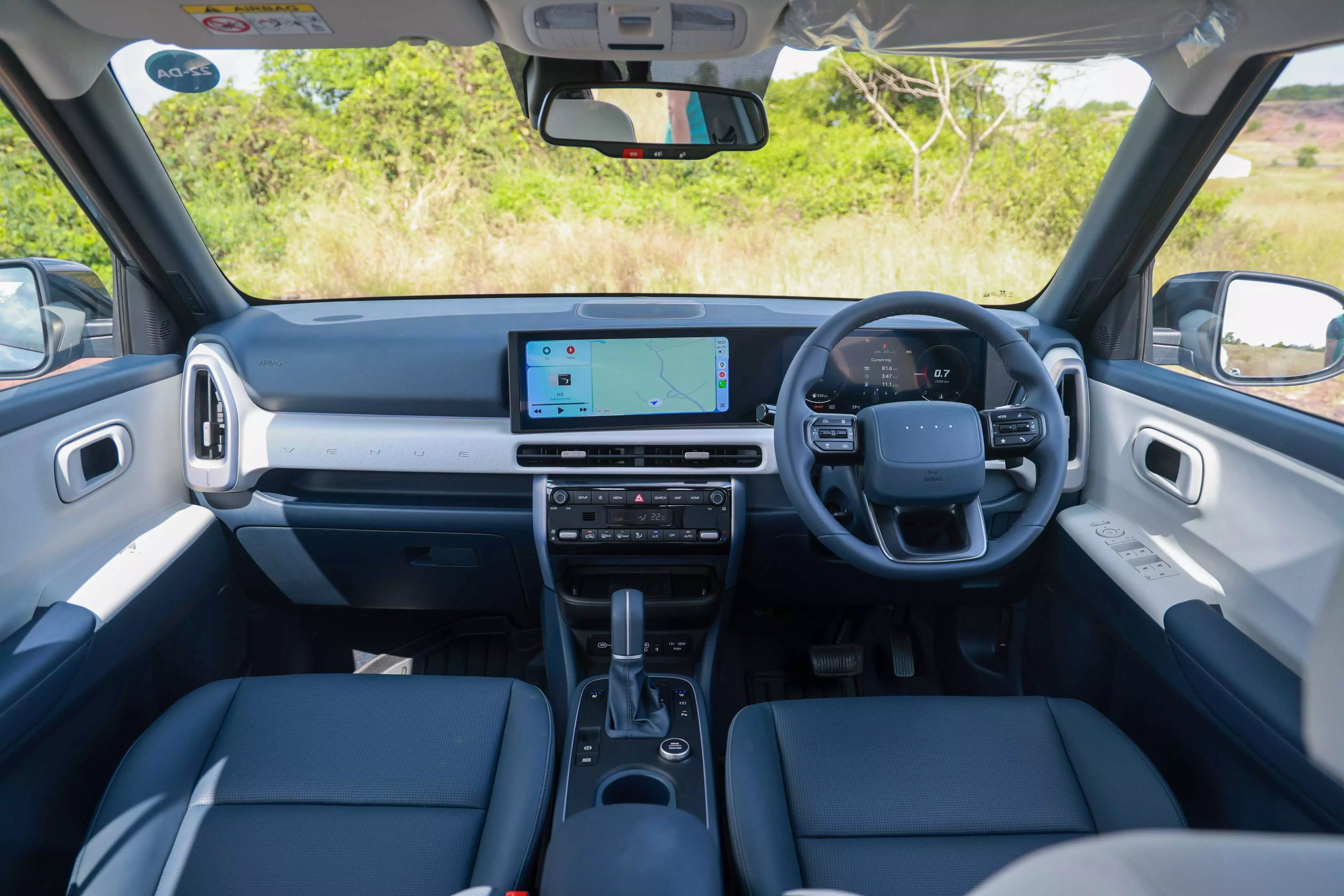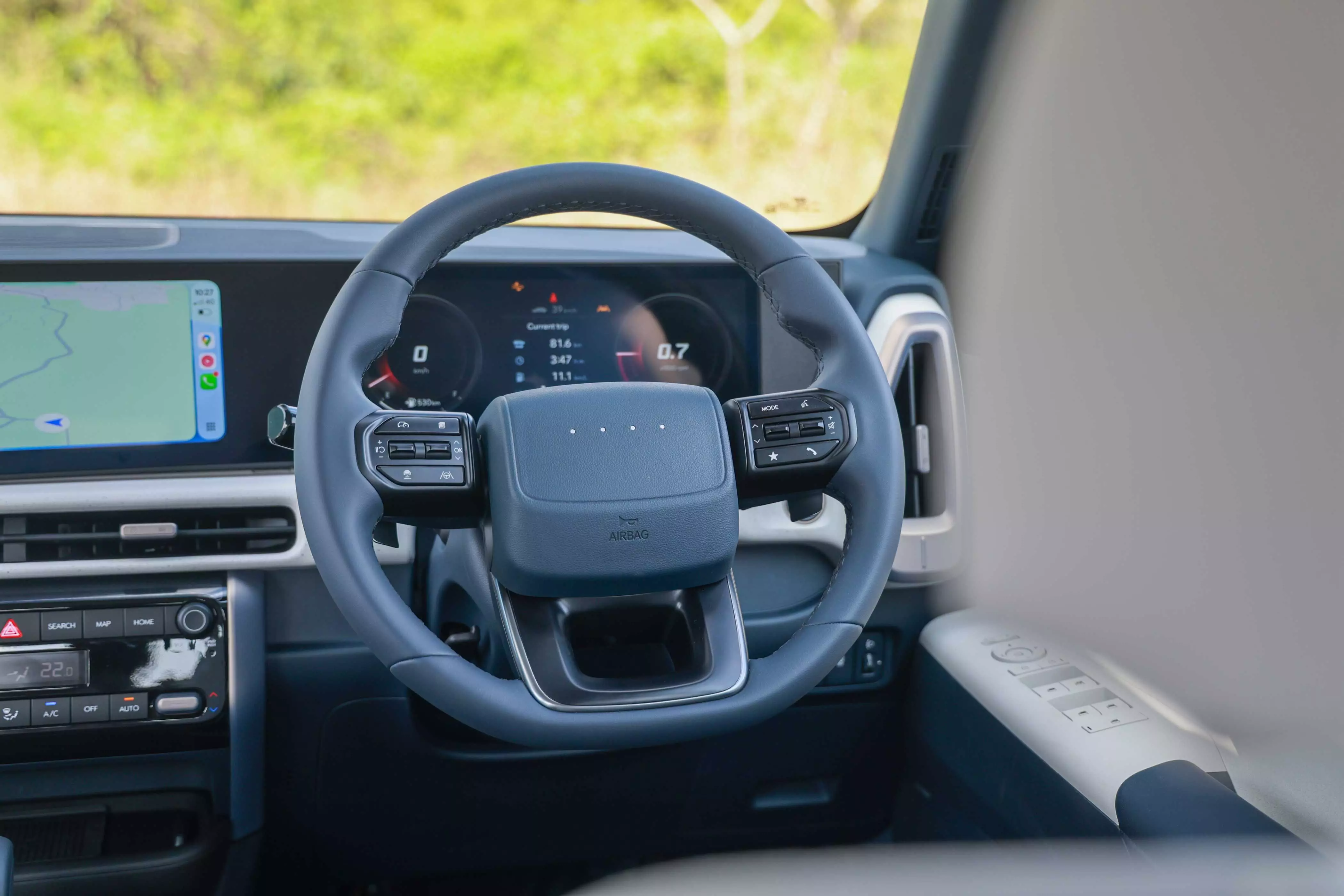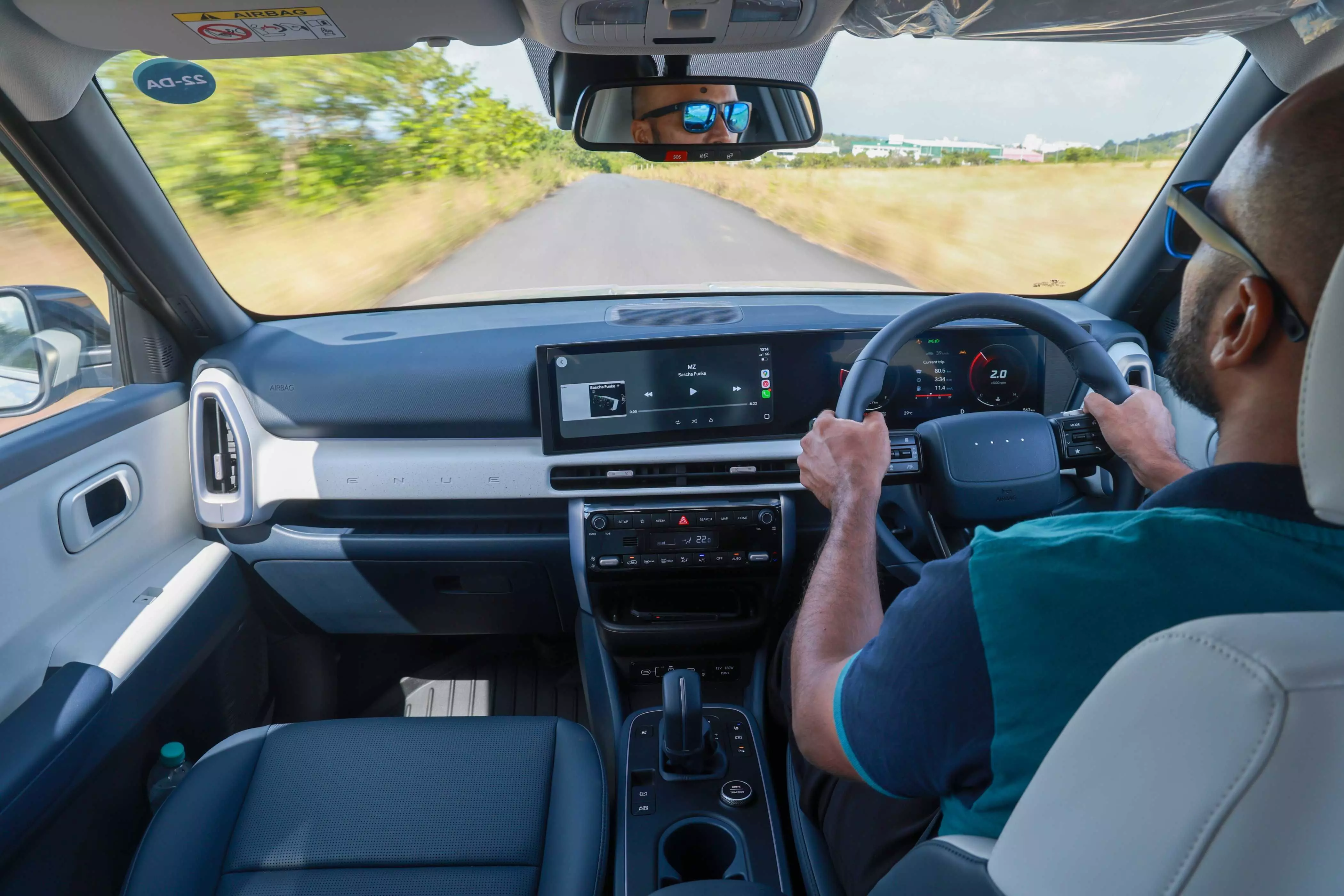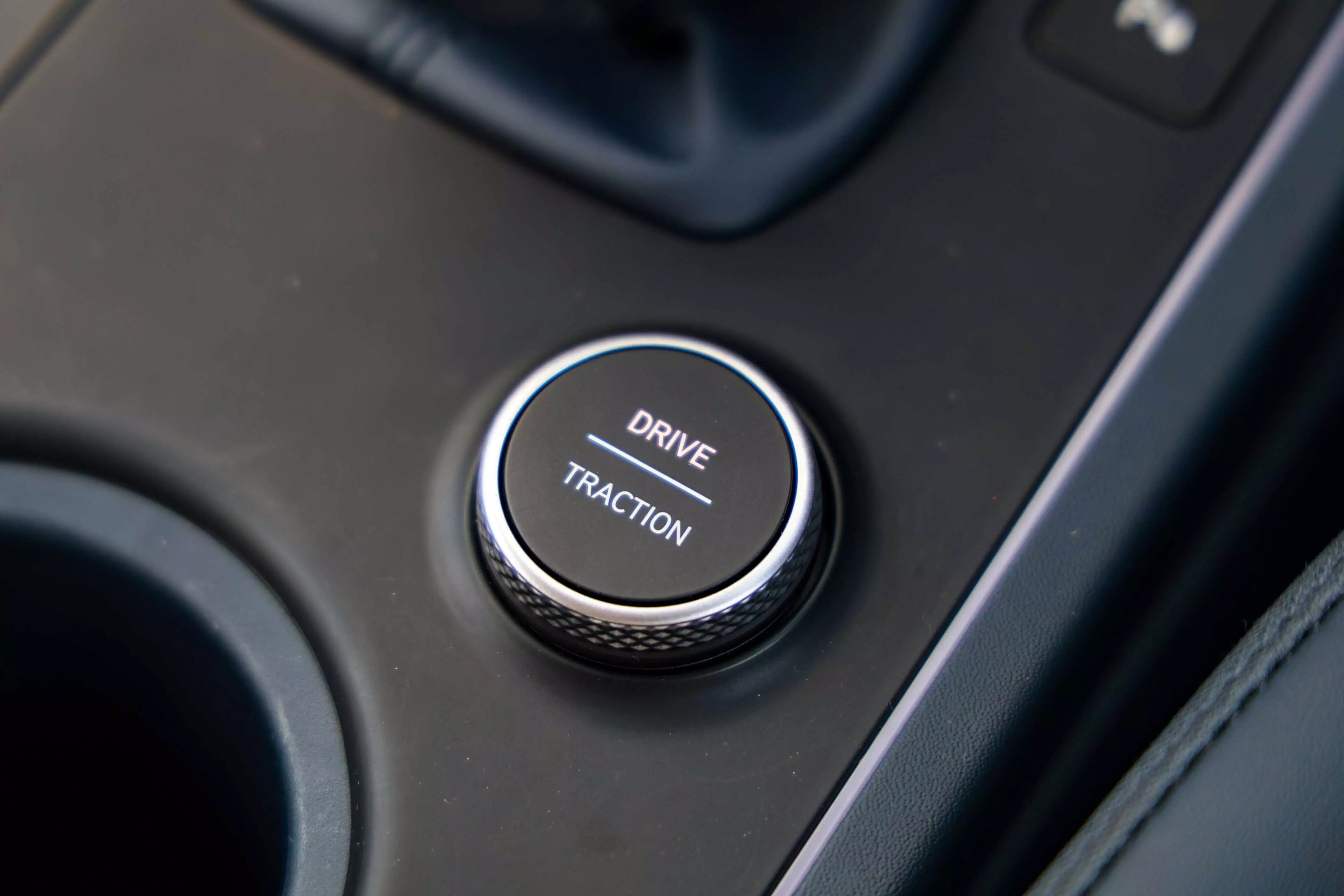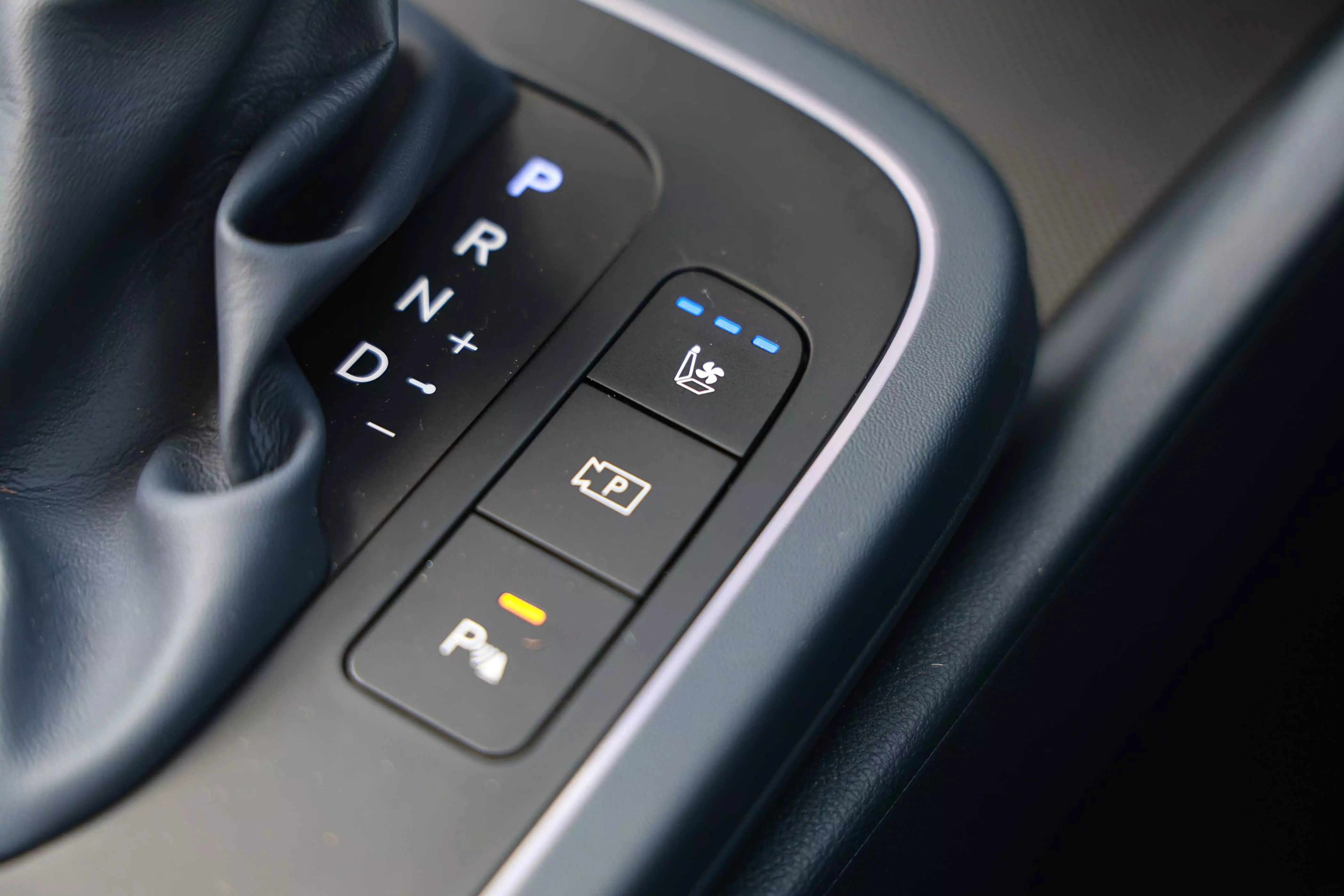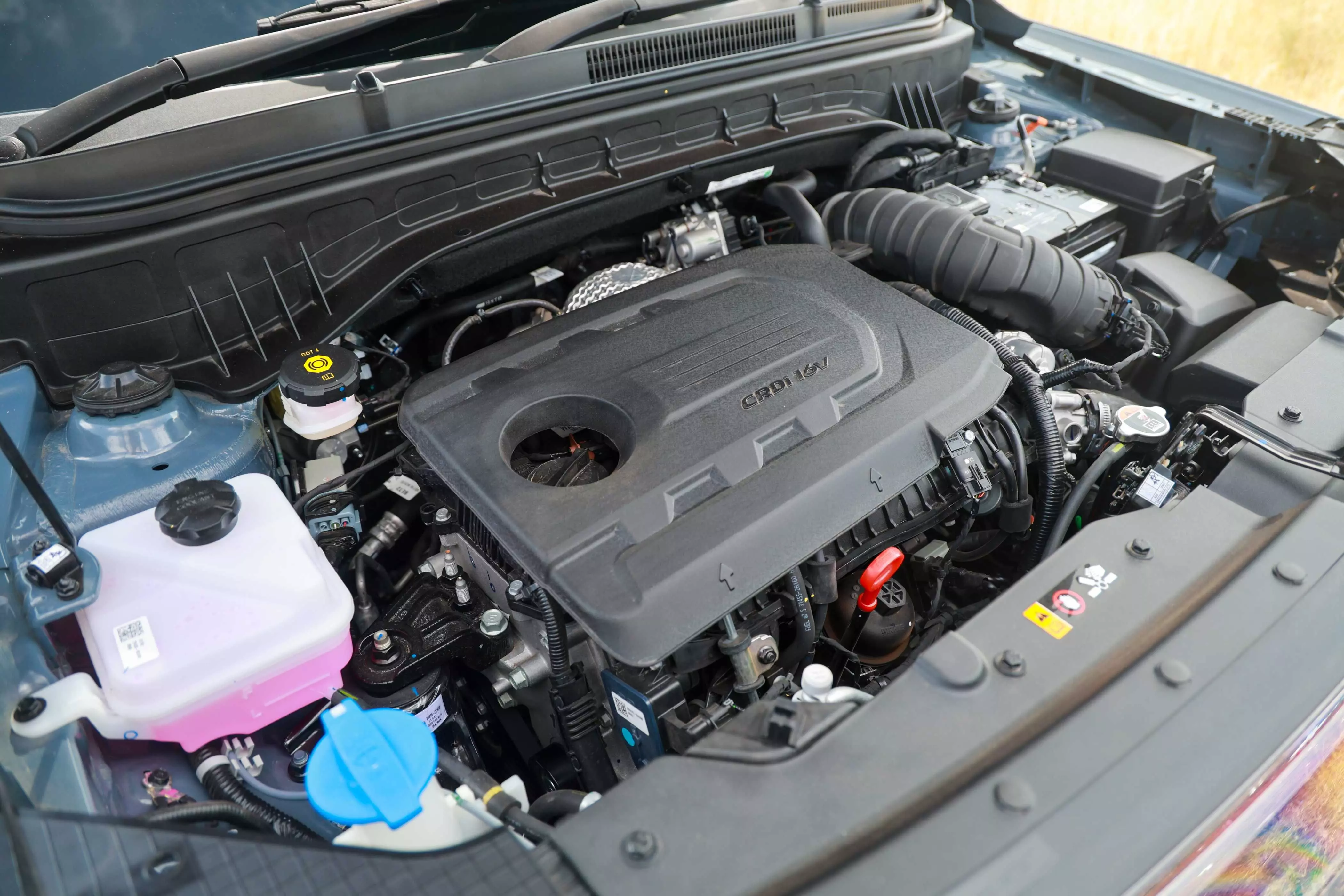The new Hyundai Venue first drive review
What happens when an already popular compact SUV gets a top-to-bottom overhaul? The second-gen Hyundai Venue is the answer, hitting the streets as a bolder, safer, and far more imposing contender.
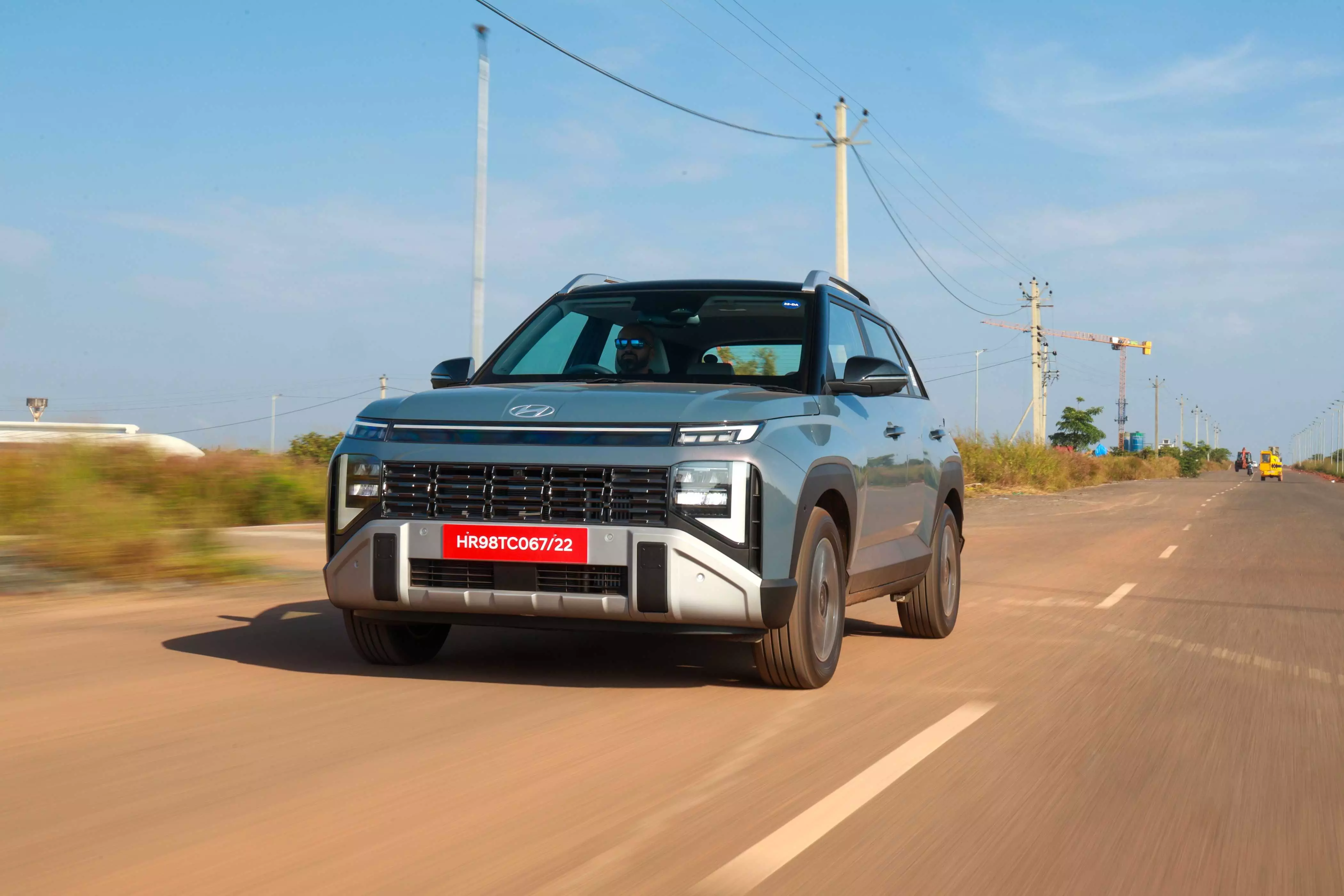
The new Hyundai Venue - Shot by Rohit G Mane for evo India
I'm always intrigued by the compact SUV segment. It presents a unique tension: every model is purpose-built for India and its buyers’ needs, but the brands still insist on deeply embedding their global design and engineering philosophies. This new 2nd gen Hyundai Venue seems to have doubled down on this ideology. It has grown in space, gets more tech, has become safer and looks more imposing – in total the car comprises over 60 changes from the previous gen. And it needed to. Its competitors have raised the game and are wooing buyers with more of… everything.
Click here to watch our first drive review on the new Hyundai Venue
Hyundai Venue exterior design
Lay your eyes on the new Venue and you can immediately see what Hyundai is going for. A face that takes inspiration from the Palisade, a taller stance, more pronounced lines and an overall more muscular design. The design is meant to stand out on the road, turn heads and shed the cute and curvy image of its predecessor. In the first instance it comes across as a larger car than it actually is. The sub-4m rule limits the extent to which it can grow in length, so the designers have increased its height by 48mm and its width by 30mm. Even the roof rails have a more upright design to give it ‘big SUV imagery’. All this coupled with the striking LED DRLS – car designers’ new favourite toy – makes for an exterior design that will either be loved or hated. Either way, it will attract attention to itself – and isn’t that the whole point of small car design these days?
Hyundai Venue interior design
Inside, the car uses colours and textures we are used to seeing in premium cars – without the usage of the same materials though (obviously). The white and blue (dove grey and dark navy in Hyundai’s parlance) upholstery and dash colour combination is unique in this segment and gives a sense of modernity. The Terrazzo-textured dash crashpad looks like it’s from a minimalistic hotel and will not be to everyone’s taste – but it blends well in the overall theme. The curved dual 12.3-inch display screens for infotainment and cluster seem like they were lifted from the BMW 3 Series. Hyundai has also considered the modern needs of people and given three distinct places to place your phone. The D-cut steering wheel is great to hold and all the buttons and switches have a robust feel to them. In this interior theme, the only thing that I found slightly odd was the dark theme on the display screens. It is not a complaint on the screen’s visibility, just a wish that Hyundai had given the option of a lighter theme as well, at least during the day – I feel it would have added to the aesthetic feel it currently imparts. The materials used on the dash and seats are at par with what you now come to expect from this segment with plastics on most of the dash and soft leatherette for upholstery and bits of the door.
The rear gets two major additions and one reduction. First addition being the roll-up sunblind, and the second being more space. The rear leg room takes a step up with a 20mm longer wheelbase and a slight reduction in the underthigh support. This reduction has been done judiciously so as to not affect the seating comfort. In fact, the subsequent increase in the knee room only enhances it. The increase in height also yields a much better headroom. While I am 5’ 10” and sat quite comfortably there, I reckon even a 6’ 2” person will be able to use the rear seat with relative ease. That’s good packaging. And to top it off, The rear seat has one level of recline available. Worth noting that it misses seat-back pockets– a small but significant skip over, especially for long road trips.
Hyundai Venue tech and features
What Hyundai has not skipped over is something they pride themselves on – tech and features. The aforementioned dual-screen is great to use, and is complemented with physical buttons for key infotainment and climate control functions (yay!). But the thing that really caught your writer's attention is the complete over the air (C-OTA) capabilities. This means that the car is capable of receiving OTA updates not just for the infotainment system, but for the ECU as well. This will allow Hyundai to roll out certain updates, and upgrades on the car remotely, without the user having to visit the service centre – much like your phone updates. Theoretically, this also means that they can diagnose your car even before it is sent for service, though I am not aware if this will be put to practice for now. Other bells and whistles include wireless CarPlay and Android Auto (first Hyundai to get this from factory), front ventilated seats, electronic parking brake, remote engine start, a crisp 360-degree camera, voice commands in five Indian languages and a 8-speaker Bose amplified sound system. The Bose sound system has been enhanced over the one on the previous gen and now offers more clarity in mid-tones and has a more refined bass - pretty good for the segment.
Hyundai Venue powertrains
Among all the changes this car gets, the unchanged bit are the engines. We were driving the 1.5-litre diesel engine that makes 114bhp and 250Nm. Other engines on offer are the 1.2-litre NA petrol (82bhp and 114Nm) and the 1-litre turbo-petrol (118bhp and 172Nm) — all the same output as before. The only addition in the engine-gearbox line-up is the 6-speed torque converter gearbox for the diesel engine. Good on Hyundai for giving so many options of powertrains to choose from. The diesel engine is the same as you find on the Creta, but feels more lively in this. The engine-gearbox duo performs seamlessly with smooth gear shifts and prompt power delivery when you demand it from the throttle pedal. You can also downshift using the paddle shifters, but there is a slight delay in the command being accepted as this is not a lightning quick DCT gearbox. Nevertheless, it does the job well enough. Cruising is where this engine really excels and probably should be the choice of people who frequent highway runs. It will gently ride the highway speeds at about 2500rpm all day and return a pocket friendly mileage. The claimed mileage of this car is 17.9kmpl (20.9kmpl for the manual).
Hyundai Venue driving impressions
If you are worrying about the incessant drone of the diesel engine filtering into the cabin (much like it did in the previous one), the fret not. The NVH levels are very well contained, with more damping elements and a stronger body structure that really isolate the cabin from the outside world. And once you start driving, your appreciation for the car increases. The steering is just fantastic with just the right weight, feedback and response. Its directness gave immense confidence on the narrow winding roads of Goa. Throwing the car around the bends threw no surprises at all and maintained far more composure than I was expecting it to. This is testament to all the work that has gone underneath the car. The enhanced Global K1 platform, which it rides on, gets more application of high-grade steel (71 per cent to be precise) for a stronger body structure. This aids in the higher rigidity which makes the car so much fun to drive. It also gives it more crash safety worthiness (though it hasn’t been NCAP tested yet) and the previously mentioned NVH levels. The ride quality is a step up from the previous generation, but is far from being the benchmark in the class. There are jerky lateral movements at low speeds on bad roads and a mild harshness filters into the cabin when it hits potholes. If you are looking for the smoothest riding car in the segment, this isn’t for you. But we are evo India. Give us a great handling car over a soft and supple one any day of the week.
Hyundai Venue price and verdict
The top spec diesel we are driving costs ₹15.7 (with dual-tone), and demands a premium over some rivals like the Kia Sonet, Tata Nexon, and Mahindra 3X0, which top out their diesel in the vicinity of ₹14 lakh. From this lot, the Sonet is due for an update soon and might come closer to Venue’s price point. Hyundai’s pricing for the Venue is closer to its other rival like the Kia Syros (₹15.9 lakh, top-end diesel) – the offering deemed to be more premium in the segment. They have played every card on specification and future-proofing – from the standard six airbags and ESC, LED lights, keyless entry, to the Level 2 ADAS and C-OTA updates. Add to all this, Hyundai’s reliability and network strength, the Venue makes a strong case for itself. All of the above pulls it into being among the most compelling C-SUV on the market.


